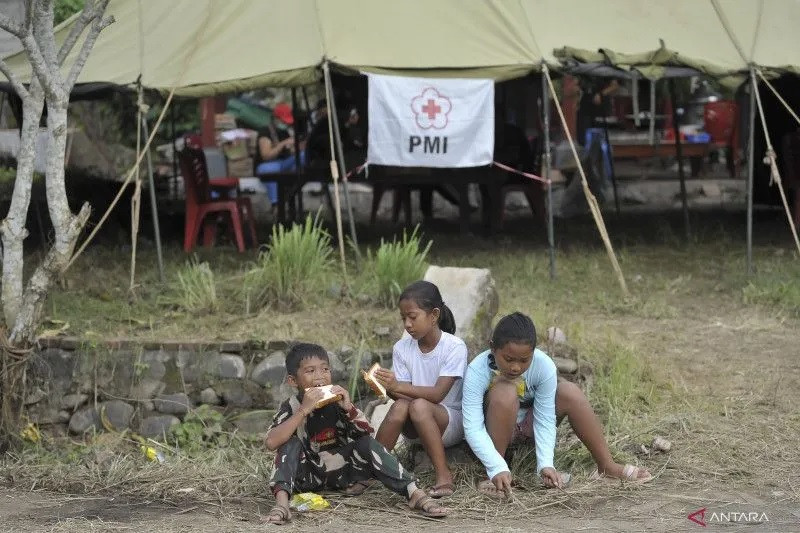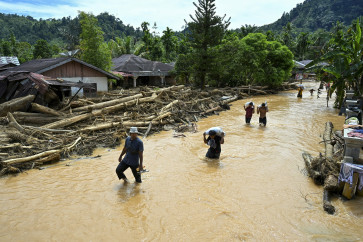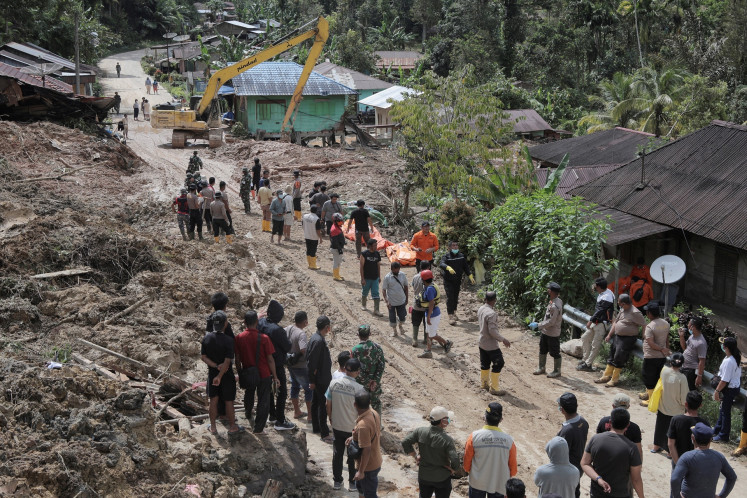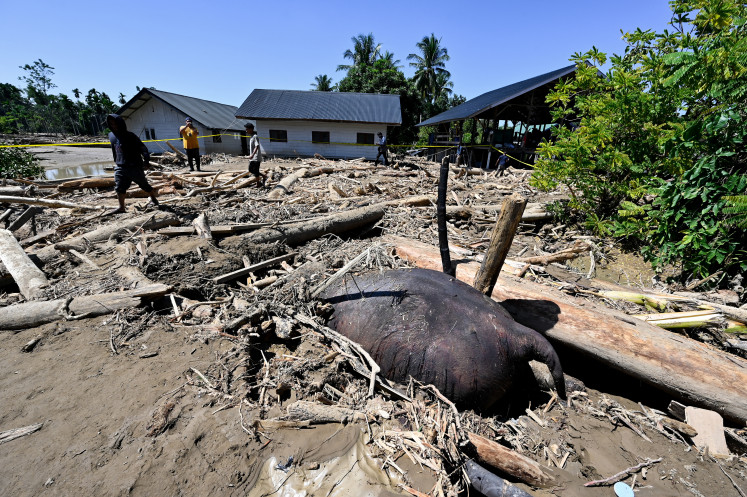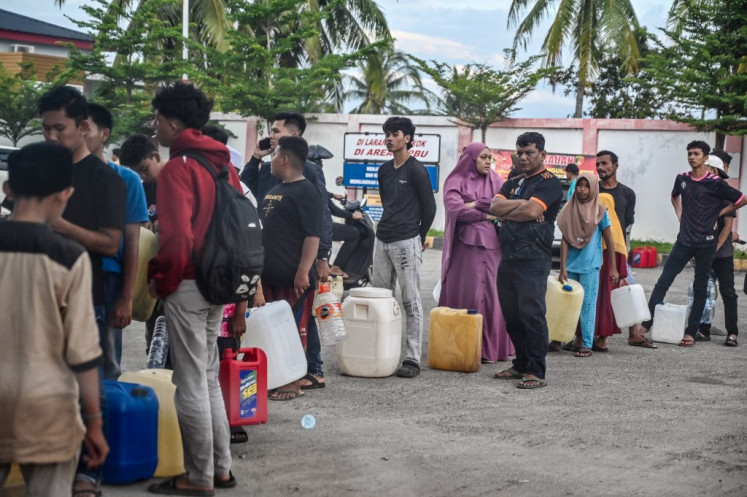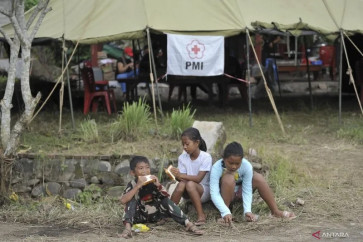Popular Reads
Top Results
Can't find what you're looking for?
View all search resultsPopular Reads
Top Results
Can't find what you're looking for?
View all search resultsDisaster, no more! What Bali can do after flooding
The growth of the tourism industry is one of the drivers of the massive land conversion.
Change text size
Gift Premium Articles
to Anyone

Not yet fully recovered from the COVID-19 crisis, and with the Group of 20 Summit drawing near, Bali has been hit yet again by a natural disaster. This time, floods and landslides in several regencies such as Badung, Tabanan, Gianyar and Jembrana have hit the tourist sector hard.
Unfortunately, flood disasters have also occurred in famous tourist destinations such as Ubud and Kuta. Various media showed tourists (both domestic and international) being evacuated, some of them not even having time to save their valuables.
The disaster came as Bali gears up for the gathering of leaders of the world’s 20 largest economies. It caused not only material losses but also casualties. At least six people were killed and material losses are estimated at Rp 6 billion (US$400,000).
It is not exaggerating to raise concerns about the damage the floods have done to the image of Bali as a beautiful tourist destination, which has long been built by tourist actors. As tourist-related businesses were slowly recovering from a pandemic paralysis, the floods may now discourage tourists from visiting Bali.
More importantly, however, this disaster signals there are problems with the environmental ecosystem on this island. If this is not resolved immediately, efforts to build sustainable tourism will get more challenging. So, what should be done to restore Bali as an environmentally friendly tourist destination?
First, it is necessary to discuss the primary factors why the floods hit Bali and caused such huge losses. The cause of flooding was recently put forward by the Bali chapter of the Indonesian Forum of Environment (Walhi), which stated that the leading cause of flooding was land conversion. The green group said land use changed from forest land to agricultural land, residential areas and even tourism. Land conversion reduced water catchment areas, so water goes straight to the lowlands. But the growth of the tourist industry is one of the drivers of the massive land conversion because the sold farm land was converted into accommodation and other tourist facilities.
On top of the land conversion issue, the flooding was also caused by poor drainage systems and too much garbage clogging the sewers. The drainage system in several tourist places in Bali is indeed too small and narrow. The irregularity of the garbage disposal system then worsened the situation once the rainfall increases. Both the drainage system factor and public unawareness massively contributed to this problem.

